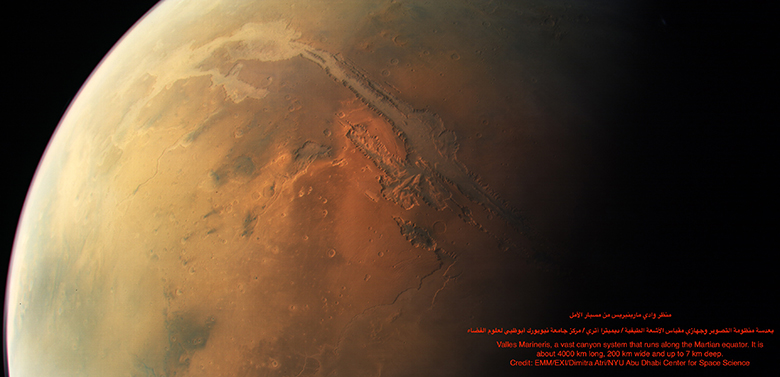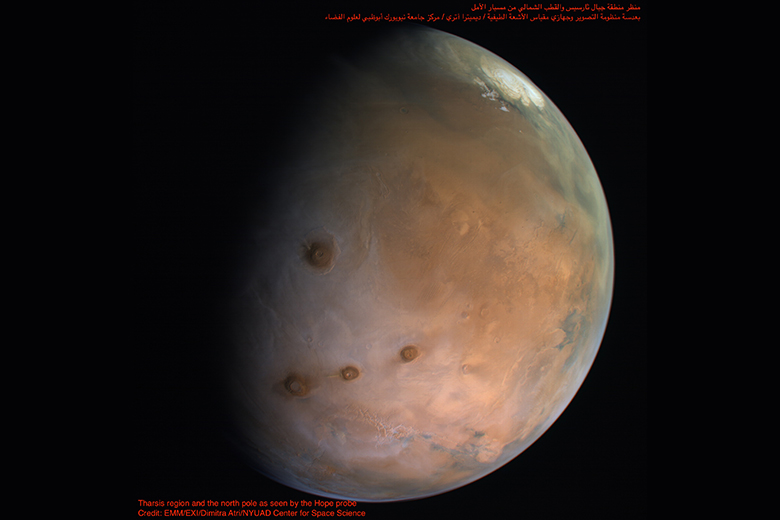NYU Abu Dhabi (NYUAD) research scientist Dimitra Atri has produced the world’s first-ever Mars Atlas in Arabic. The atlas uses data exclusively created from the UAE’s Emirates Mars Mission (EMM), also known as Hope or Al-Amal, in an aim to make the Hope probe’s findings more accessible to both the UAE’s Arabic-speaking population and that of the world.
The Mars Atlas Project combines different images that the Hope probe is producing to map out the planet’s surface. The result is a holistic view of Mars and stunning images of a planet that once held very similar conditions to Earth. To achieve this, Atri and his team process observational data from EMM’s Emirates eXploration Imager (EXI) instrument, one of the three instruments aboard the orbiter. This will help the team demonstrate how the planet changes over one Mars year, which is roughly the equivalent of two Earth years. Updates to the atlas are to be gradually made as more data from the Hope probe becomes available.

The atlas will provide invaluable accessible data to Arab speakers across the UAE and the world while contributing to a crucial understanding of the planet’s atmospheric conditions
This information will allow for a more detailed understanding of the planet’s atmospheric thinning, which has caused it to cool and dry over the past four billion years. Atri further predicts that, in three months, the collected data will be used to address certain unsolved scientific queries concerning the erosion of Mars’ atmosphere, the findings of which will eventually help the international scientific community better understand the atmospheric processes of the Earth.
EMM is the UAE and the Arab world’s first interplanetary mission commissioned by the country’s leaders in 2014. The spacecraft was launched from Japan on 20 July 2020. Seven months later, on 9 February 2021, the Hope probe entered Mars’ orbit. It will continue its scientific mission to explore Mars until the middle of 2023, with the possibility of extending it for an additional Martian year (two Earth years).





